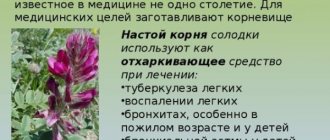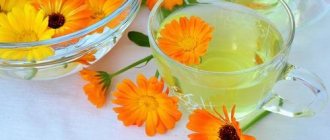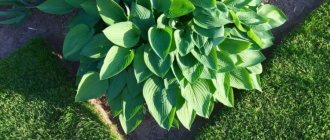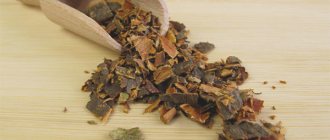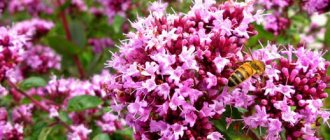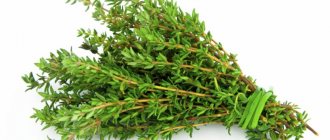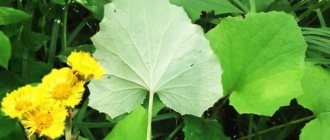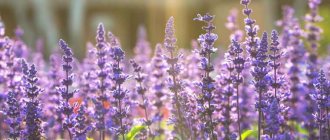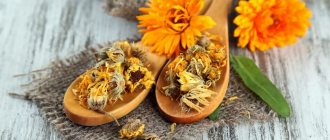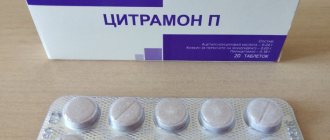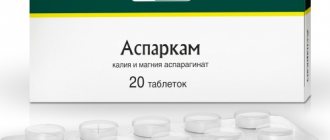A medicinal plant with a wide range of medicinal effects is the red root. The plant has long been used by folk healers, healers and shamans of Altai and Siberia. Red root, or bear root, or forgotten kopechnik is a perennial of the genus Kopeechnik of the Legume family. Decoctions and tea from this root are red in color.
A drink made from red root has long been used by the indigenous people of Siberia as a tonic, stimulant, and also to restore vitality and male potency. It is used both in folk and official medicine (as a dietary supplement to food in the form of solutions, tablets and powders from the red root).
Description of the plant
The red root got its name from its huge, up to 10 cm thick, hard rhizome, reaching more than 5 meters in length and having a rich red color. Even preparations made from the root are distinguished by their red color.
It is a herbaceous perennial with paired pinnate leaves consisting of small oval leaflets. The plant blooms from mid-summer to autumn, covered with purple clusters of small flowers. After the flowers fall off, round, coin-like, fluffy fruits ripen on the kopeck plant.
The red root is not widespread outside of Siberia and the Altai region. Even in its homeland they are trying to preserve the rare plant by limiting the collection of roots. Here it is allowed to harvest no more than a third of the rhizomes of one plant every 10 years.
Where to look for healing roots?
Due to its unique healing properties, the herbaceous crop has been used in folk medicine since ancient times. It is believed that after hibernation, bears like to feast on its root to restore strength, which is why pennyweed is popularly called bear root.
However, despite its wide geographical distribution and unpretentiousness to climatic conditions, it is quite difficult to stumble upon this medicinal plant in nature. The guideline for searching for it is accumulations of snow in the mountains, near which the tea plant (red root) grows, the use of which is quite popular among local residents. A plant for long-livers, which helps maintain maximum strength and energy in old age, is a useful basis for tea - an invigorating drink that has a positive effect on male potency, and is especially tasty in combination with milk.
Procurement of raw materials
The roots of the plant and the entire above-ground part are harvested as medicinal raw materials. The rhizome of an adult large pennywort is dug up in early spring or in the autumn months, cleaned of soil residues and crushed into small pieces.
Flower brushes and leaves are collected from July to September by cutting off the top of the plant, leaving at least 30 cm of the stem.
The raw materials are dried in a room protected from moisture and sunlight or under a canopy, distributed in paper bags or cardboard boxes and stored for three years in a dry, dark place. Flowers retain their medicinal properties for much less time; they are stored for no more than a year.
Medicinal properties of red root
The composition of the penny includes:
- flavonoids and saponins;
- alkaloids and coumarins;
- tannins and selenium;
- catechins and polysaccharides;
- ascorbic acid and minerals.
The medicinal properties of pennyweed include:
- relieves inflammation and calms the nervous system;
- tones and strengthens the immune system;
- has an astringent and antioxidant effect;
- inhibits the growth of tumors and prevents the appearance of neoplasms;
- thins and removes mucus;
- has rejuvenating and restorative properties;
- stops bleeding and lowers temperature;
- improves blood circulation and blood composition;
- normalizes digestion and stimulates the function of the urinary system.
With the help of red root you can get rid of headaches and calm your nerves. The plant will also help reduce the frequency of epileptic seizures. Kopeknik strengthens vascular walls, has a beneficial effect on the functioning of the heart and fights anemia.
For the stronger sex
It’s not for nothing that the plant is called male root. Kopechnik will provide invaluable assistance to men suffering from sexual dysfunctions. Using the red root in the treatment of the prostate, you can reduce inflammation, improve blood circulation and get rid of painful spasms, thereby easing the course of the disease.
The plant also helps with inflammatory and infectious diseases of the kidneys, bladder and ureters, eliminating the manifestations of pyelonephritis and cystitis.
The root also affects sexual function. Normalizes potency, stimulates libido, improves the quality of seminal fluid, which makes it useful in the treatment of male infertility.
For beautiful ladies
The red root has been successfully used to treat gynecological problems in women. Preparations based on pennywort will be useful for prolapse of the uterus, to stop uterine bleeding, help regulate hormonal levels and maintain calm during menopause.
It is used for therapeutic and prophylactic purposes in the fight against neoplasms and lumps in the mammary glands.
Kopeechnik stimulates urine excretion and normalizes the urinary system, strengthens the heart and prevents osteoporosis, eliminates swelling and promotes cell restoration and rejuvenation.
Dosage forms and use
Equally effective is the use of self-made infusions and decoctions, or treatment with ready-made remedies in the form of tea, tinctures or tablets purchased at the pharmacy. In general, there are a number of medicinal forms of red root: tea, tincture, tablets, decoction, balm.
Pills
The simplest solution is to buy ready-made tablets based on kopeck and take them 2 times a day, one tablet at a time, during meals. The course of treatment lasts one month. If the effect is weak, then you can repeat the course, but only after taking a month's break between treatment. This dosage form is quite convenient, since the tablets contain a clear dosage of the root.
Tea
You can buy ready-made tea in bags, or make it yourself . Why the ground root (a teaspoon) is brewed with a cup of boiling water. After 20 minutes of infusion, the tea is ready. It must be consumed per day in 2-4 doses. The course of treatment is one month, after at least 2 weeks there is a break, only then the treatment is repeated (if necessary).
Tincture
There is also a ready-made tincture in pharmacies, or you can make it yourself. A bottle of vodka 0.5 l. pour 50 g. ground roots and let it brew for at least a week. The prepared tincture is decanted, consumed half a teaspoon, diluted in 1/2 cup of purified water 2-3 times a day during meals. Treatment time is 1-3 months (this will depend on the purpose of treatment).
Infusion or decoction
It is prepared from the dried root: its powder (40 g) is poured into a thermos with 1 liter of boiling water and allowed to brew for about an hour. The finished infusion is decanted and consumed in a glass for a month.
For what diseases is it used?
It is advisable to use the red root for the following diseases:
- Pathologies of the urinary system. Reduces inflammation and stimulates urine excretion, which is used to treat pyelonephritis, cystitis, nephritis and bedwetting.
- Prevention and treatment of the heart and blood vessels. Improves capillary permeability and strengthens vascular walls, increases blood pressure and relieves vascular spasms, normalizing blood circulation.
- Nervous disorders. It can have both a tonic and sedative effect. It is used to improve performance and for sleep disorders, helps eliminate depressive syndrome and signs of neurosis.
- Diseases of the bronchopulmonary system. Kopechnik is an excellent antipyretic remedy for viral and colds. It will lower the temperature and cope with coughs due to flu, bronchitis, and asthma. It will be useful in the treatment of pneumonia and eliminate pulmonary hemorrhage during tuberculosis.
- Strengthens the muscle walls of the intestines and restores peristalsis. It has an astringent effect, which is used to stop diarrhea. Normalizes digestion and eliminates spasms in the gastrointestinal tract.
It is widely and successfully used as an effective therapeutic and prophylactic agent for diseases of the male and female reproductive system. Copes with inflammation of the prostate and mastopathy, eases menopause and improves erectile function, helps in the treatment of infertility, inhibits the growth of tumors and stops uterine bleeding.
The use of preparations based on red root stimulates physical activity and improves brain activity, helps cleanse the body of toxic substances and toxins. The plant is advisable to use for blood diseases (anemia, anemia).
What is useful, indications for using the herb
Fresh grass has similar properties as dried grass.
Effect on the body:
- genitourinary system . Inflammation goes away, stones are removed faster;
- CNS . Apathy, dizziness, depression are eliminated;
- immune _ The body's defenses are strengthened;
- vascular _ The elasticity of blood vessels and capillaries increases (vasoprotective effect).
In the presence of chronic fatigue, this plant quickly restores the body.
Kopeechnik is a honey plant. Considered a good forage plant for livestock.
Use at home
The healing power of the red root is recognized not only by folk healers, but also by traditional medicine. Medicinal preparations from kopeck can be made independently at home, making invigorating tea, water and alcohol infusions, decoctions, or you can purchase ready-made medicinal products in pharmacy chains.
Pharmacy drugs
Red root tincture.
This is an alcohol-containing preparation with a plant extract. Intended for the treatment of inflammatory processes in the prostate gland and prostate.
Improves blood circulation, eliminates pain and swelling, promotes the resorption of tumors in the gland. In addition to pennyweed, the tincture may also contain medicinal raw materials of bird knotweed.
Dietary supplement in tablet form is intended for the prevention and treatment of prostatitis and prostate adenoma. Eliminates problems with painful urination, relieves swelling and inflammation. Two tablets are prescribed daily for a month. In addition, the drug has general strengthening and tonic properties and can be used not only by men, but also by women.
Decoction
Boil 500 ml of water and add a large spoon of dry red root. Simmer for 20 minutes on low heat and leave for a couple of hours. Taking two large spoons of the decoction three times a day helps cleanse the blood and restore metabolic processes. For cystitis or prostatitis, you can use a decoction for microenemas and douching.
To treat sexual impotence, prostatitis, as well as to normalize irregular painful menstruation, you can prepare the following decoction: boil 4 glasses of water, add a tablespoon of raw materials and boil for 7 minutes. Warm and leave for an hour (you can use a thermos). Filter the liquid and divide into five equal portions. One serving should be drunk gradually over one day, adding honey to taste. After five days, prepare a new portion of the decoction and continue treatment for 4 weeks.
If, in addition to kopeck, you add other medicinal herbs to the decoction, you will get an effective remedy for the treatment of tuberculosis. So, make a collection of equal parts (1 tsp) of elecampane, licorice, pink radiola and istoda, add 2 tsp. red root. Boil 3 glasses of water and add 50 g of the mixture. Simmer for half an hour over low heat and pour into a thermos. Leave for at least two hours. Filter the liquid and drink half a glass in the morning, afternoon and evening.
You may be interested in an article about the treatment of Staphylococcus aureus with folk remedies.
There is also a useful article on the treatment of chronic runny nose.
Here you will learn about treating tuberculosis at home.
Infusion
An aqueous infusion of the plant is good to take for diseases of the bronchopulmonary system, as well as to relieve pain and inflammation in cases of problems with the prostate gland.
Pour 4 cups of boiling water into a thermos and add 50 g of dry kopek. Leave for 12 hours and filter. Drink 250 ml of infusion before meals in the morning, afternoon and evening.
To reduce nervousness, normalize the menstrual cycle and treat gynecological diseases, the following infusion will be useful: in boiling water (2 cups), simmer 20 g of pennywort rhizome for about half an hour. Place in a warm place for a couple of hours and then filter. Divide into three servings and drink within one day. Continue taking for 4 weeks.
Tea
To prepare tonic tea from red root, you need to throw a large pinch of dry raw material into a teapot and pour 250 ml of boiling water. Close the lid and leave for a quarter of an hour. It is recommended to drink no more than 500 ml of the healing drink per day. It is allowed to sweeten the tea with honey or add milk. This drink not only improves performance, but also strengthens the immune system and helps fight colds and viral diseases.
Contraindications
Despite the undoubted benefits, the use of the plant has limitations and contraindications for certain categories of people.
- Before starting use, people with chronic diseases, kidney and liver pathologies, arterial hypertension, thrombophlebitis and central nervous system problems, as well as individual intolerance should consult a doctor.
- It is not recommended to drink this tea for pregnant and lactating women and children.
Tea from the forgotten kopeck has many beneficial properties. Red root tea is especially useful for men against prostatitis, for restoring potency and treating other diseases of the genitourinary system. When used thoughtfully, taking into account contraindications and doctor's recommendations, the use of herbal decoction will bring great health benefits.
